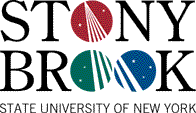 |
See the GSRM v.2 for a more up-to-date and comprehensive model.
Global Strain Rate Map Project: Introduction
|
||||||||||||||||||||||||
| Version |
# Geodetic Sites |
# Hor. Velocities |
# Studies | Techniques |
|
1.2 May 2004 |
4281 | 5170 | 86 | GPS |
|
1.1 June 2003 |
3446 | 3849 | 62 | GPS, VLBI, DORIS |
|
1.0 Dec 2001 |
2682 | 2933 | 50 | GPS, VLBI, DORIS |
Note: For the current (Jun 2013) GEM GSRM version, go to https://gsrm2.unavco.org.
After this Introduction, please visit the following pages:
How Do I Get GSRM Results?
This website allows users to view and download sample maps of strain rates and velocity fields. Users can also use the Voyager: ILP GSRM map tool to create and view custom made maps of strain rates, velocity fields in specified frames of reference, vector data, etc. Users can create maps of GSRM results together with other data sets such as Harvard CMT, and stress directions from the World Stress Map. Users can download model results as well as some of the input data.
Main GSRM References
Users are kindly asked to give the following references when using or presenting results of the GSRM project.
Users of the model results are asked to give credit to the second reference.
-
Kreemer, C, A.J. Haines, W.E. Holt, G. Blewitt, and D. Lavalée, On the determination
of a global strain rate model, Earth Planets Space, 52, 765-770, 2000.
Kreemer, C., W.E. Holt, and A.J. Haines, An integrated global model of present-day plate motions and plate boundary deformation, Geophys. J. Int., 154, 8-34, 2003.
(william.holt
wholt

International Lithosphere Program | SUNY Stony Brook | Global Strain Rate Map Project
Comments: webmaster![]() unavco.org
unavco.org
© Copyright


